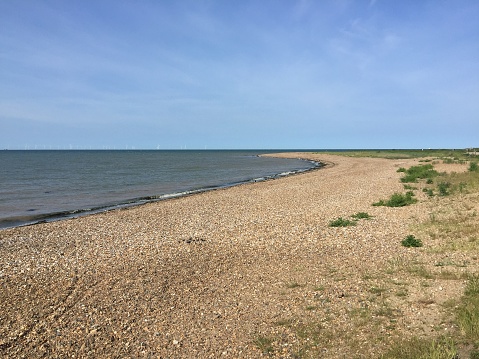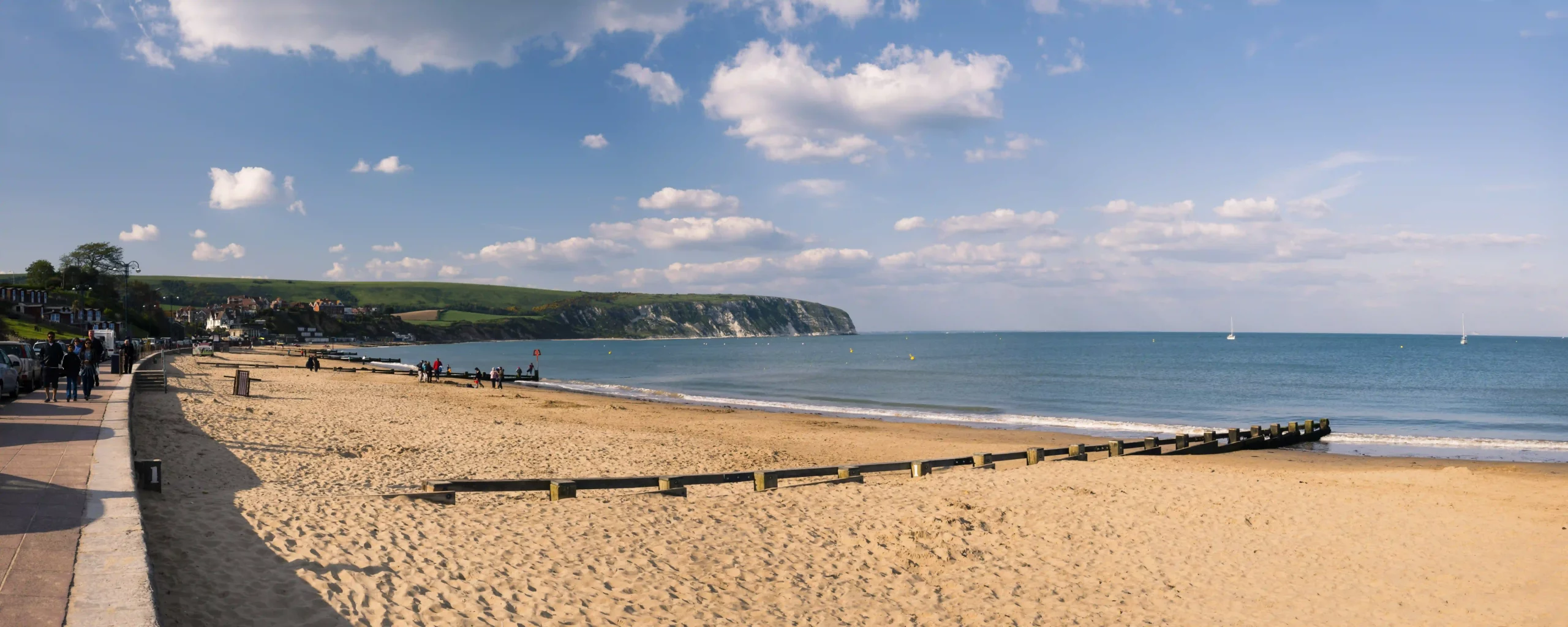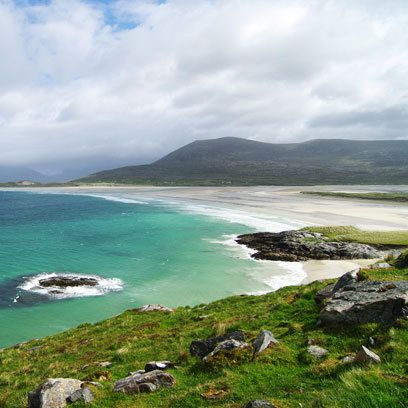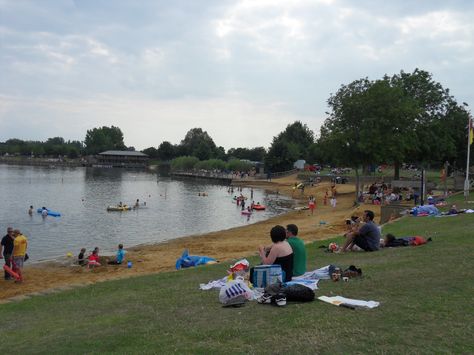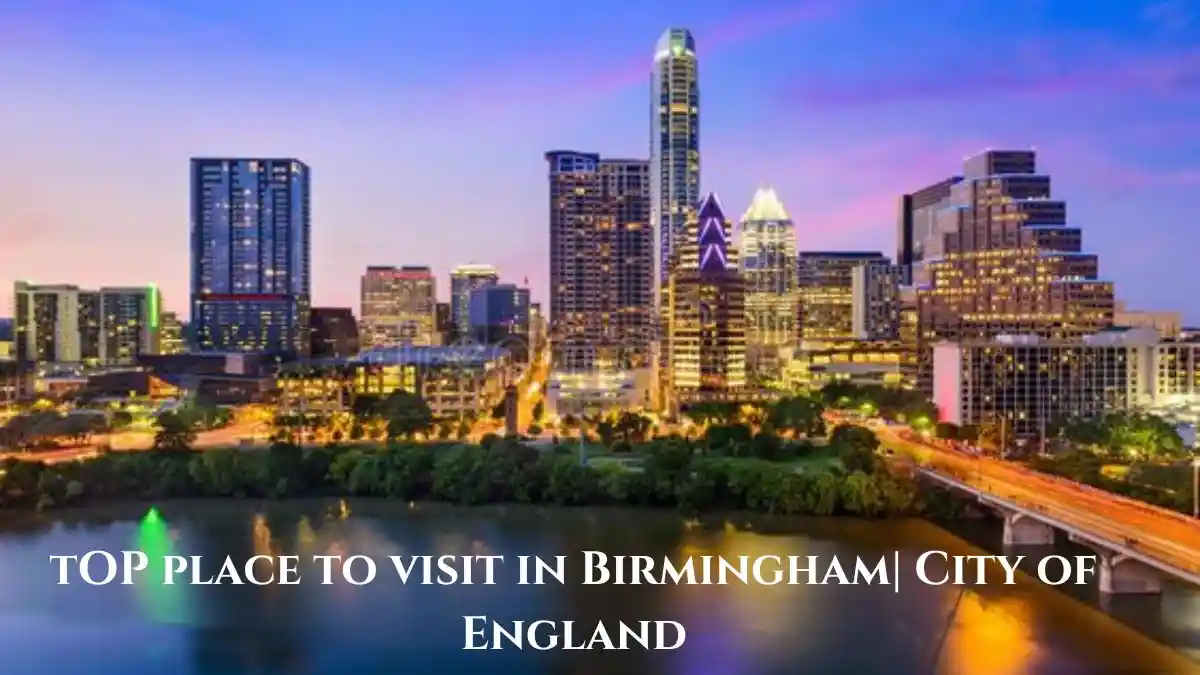Top 19 Places to Visit in the UK: From Historic Sites to Natural Wonders (2024 Updated)
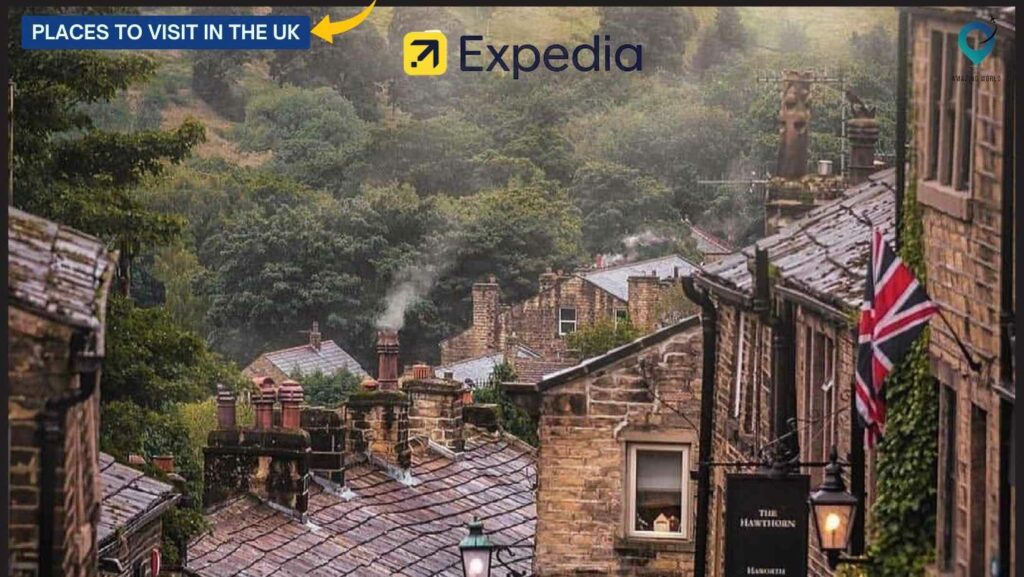
Are you excited to explore the amazing places in the UK? 
Whether you’re into ancient mysteries like Stonehenge or quaint villages in the Cotswolds, there’s something for everyone! So, get ready to pack your bags and discover the magic of the UK!
1. London: Known for iconic landmarks like the Tower of London, Buckingham Palace, and West End theaters.

About London: London, the capital of England, is a bustling metropolis brimming with history, culture, and iconic landmarks. It’s a melting pot of diverse neighborhoods, each offering its own unique charm. From the historic Tower of London to the grandeur of Buckingham Palace, and the vibrant theaters of the West End, there’s something for everyone in this vibrant city.
Address: London, England
How to get there: 
Why to visit: 
Daily Average Budget: 
Activities and Attractions:
- Explore the historic Tower of London and marvel at the Crown Jewels.
- Witness the Changing of the Guard ceremony at Buckingham Palace.
- Catch a show at one of the iconic theaters in the West End.
- Visit world-class museums such as the British Museum, Tate Modern, and National Gallery.
- Take a stroll along the Thames River and enjoy stunning views of landmarks like the London Eye and Big Ben.
- Indulge in a shopping spree at famous retail hubs like Oxford Street, Covent Garden, and Camden Market.
Things to Avoid:
- Avoid peak tourist seasons to minimize crowds and long queues at popular attractions.
- Be cautious of pickpockets in crowded areas, especially in tourist hotspots and public transportation.
- Avoid driving in central London due to congestion and expensive parking fees; opt for public transport instead.
- Stay vigilant when crossing busy streets and always use designated pedestrian crossings.
- Avoid feeding pigeons in Trafalgar Square, as it’s prohibited and can attract fines.
2. Edinburgh: Known for its historic sites such as Edinburgh Castle, the Royal Mile, and the annual Edinburgh Festival.

About Edinburgh: 
Address: Edinburgh, Scotland
How to get there: 
Why to visit: 
Daily Average Budget: 
Activities and Attractions:
- Explore the iconic Edinburgh Castle and learn about its fascinating history.
- Wander along the historic Royal Mile, lined with charming shops, pubs, and landmarks.
- Visit the Palace of Holyroodhouse, the official residence of the British monarch in Scotland.
- Experience the vibrant atmosphere of the Edinburgh Festival, featuring world-class performances in theater, music, comedy, and more.
- Climb Arthur’s Seat for panoramic views of the city skyline and surrounding landscape.
- Discover the city’s rich literary heritage with a visit to the Writers’ Museum or a literary walking tour.
Things to Avoid:
- Avoid visiting during peak tourist seasons, such as August during the Edinburgh Festival, to avoid large crowds and higher prices.
- Be cautious of uneven pavements and steep inclines, especially in the historic Old Town area.
- Avoid engaging with unofficial tour guides or street performers who may try to solicit money.
- Check for closures or limited access to attractions in advance, especially during special events or maintenance periods.
- Be mindful of local customs and etiquette, such as respecting quiet zones in historic buildings or religious sites.
3. Bath: Known for its Roman Baths, Georgian architecture, and connections to Jane Austen.
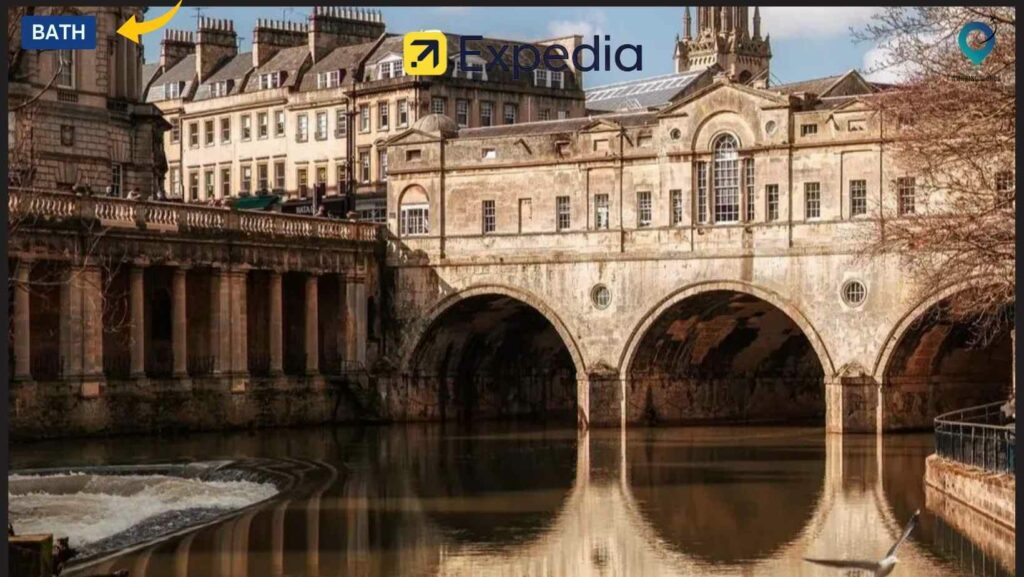
About Bath: 
Address: Bath, Somerset, England
How to get there: 
If traveling by car, Bath is conveniently located near major motorways such as the M4 and A36. Additionally, local buses and taxis provide transportation within the city.
Why to visit: 
Daily Average Budget: 
Activities and Attractions:
- Explore the Roman Baths complex and learn about its history through interactive exhibits and guided tours.
- Take a stroll along the Georgian streets of Bath and admire architectural masterpieces like the Royal Crescent and Pulteney Bridge.
- Visit the Jane Austen Centre to delve into the life and works of the celebrated author.
- Relax and unwind at the Thermae Bath Spa, where you can bathe in natural thermal waters with stunning rooftop views.
- Wander through the vibrant stalls of Bath’s markets, offering everything from artisanal crafts to delicious local produce.
Things to Avoid:
- Avoid visiting the Roman Baths during peak hours to avoid crowds and long queues.
- Be cautious of steep slopes and cobbled streets in certain parts of the city, especially for those with mobility issues.
- Avoid feeding or disturbing the wildlife in Bath’s parks and gardens.
- Check for any scheduled maintenance or closures of attractions before planning your visit.
- Be respectful of Bath’s heritage and historic sites by following signage and guidelines provided on-site.
4. Stonehenge: Known for its ancient stone circle and mysteries surrounding its construction.
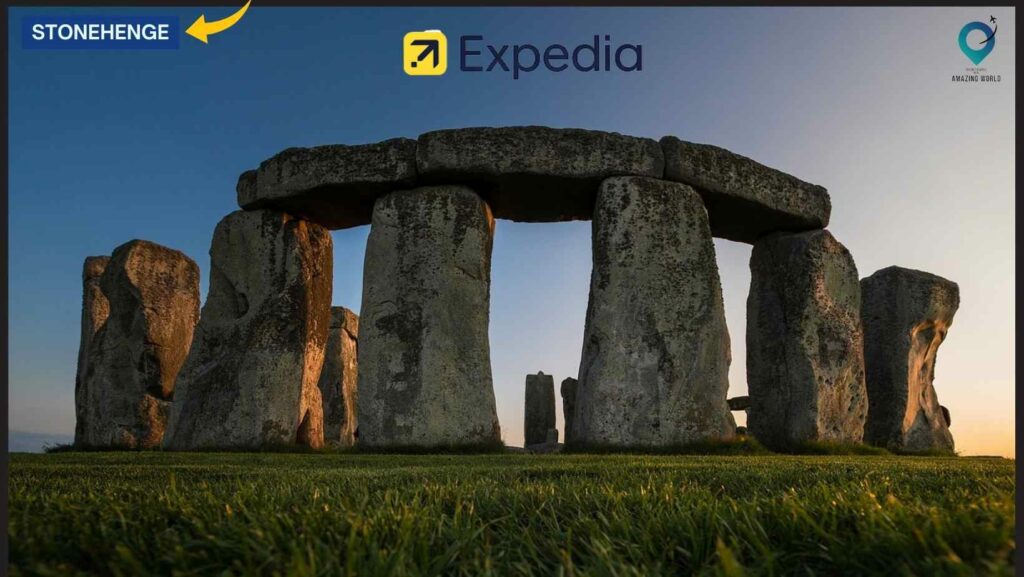
About Stonehenge: 
Address: Stonehenge, Amesbury, Wiltshire, England
How to get there: 
Why to visit: 
Daily Average Budget: 
Activities and Attractions:
- Marvel at the awe-inspiring sight of Stonehenge’s towering stone monoliths, arranged in a circular formation.
- Explore the newly renovated visitor center, which features interactive exhibits, archaeological displays, and informative multimedia presentations about Stonehenge’s history and significance.
- Join a guided tour led by knowledgeable experts to learn more about the theories and mysteries surrounding Stonehenge’s construction and purpose.
- Enjoy panoramic views of the surrounding Wiltshire countryside from designated viewpoints around the monument.
- Visit nearby attractions such as the Stonehenge Landscape, which includes ancient burial mounds and ceremonial sites.
Things to Avoid:
- Avoid climbing on or touching the stones, as they are fragile and protected by conservation regulations.
- Be cautious of traffic and follow designated pedestrian paths when approaching Stonehenge.
- Avoid visiting during peak tourist seasons or busy times to enjoy a more tranquil and immersive experience.
- Be respectful of the site’s spiritual and cultural significance to indigenous peoples and refrain from disruptive behavior or loud noises.
- Check weather conditions and dress appropriately for outdoor exploration, as Stonehenge is exposed to the elements throughout the year.
5. Windsor: Known for Windsor Castle, the Queen’s weekend residence, and the Changing of the Guard ceremony.

About Windsor: 
Address: Windsor, Berkshire, England
How to get there: 
Why to visit: 
Visitors can witness the storied Changing of the Guard ceremony, a time-honored tradition dating back centuries, and explore the picturesque streets lined with quaint shops, cafes, and traditional English pubs.
Daily Average Budget: 
Activities and Attractions:
- Explore the grandeur of Windsor Castle, including the State Apartments, St. George’s Chapel, and the Queen Mary’s Dolls’ House.
- Witness the spectacle of the Changing of the Guard ceremony, where uniformed soldiers march in precision to the beat of military bands.
- Visit the Windsor Great Park, a vast expanse of greenery and woodland ideal for picnics, leisurely walks, or horseback riding.
- Discover the charming streets of Windsor town center, dotted with historic buildings, independent boutiques, and traditional English tearooms.
Things to Avoid:
- Avoid visiting Windsor Castle during peak tourist times to minimize crowds and queues, particularly during weekends and holidays.
- Be mindful of scheduled closures or restricted areas within Windsor Castle, as certain sections may be inaccessible to visitors during official events or ceremonies.
- Avoid feeding or approaching the royal swans along the River Thames, as they are protected wildlife and may become aggressive if provoked.
- Check for any road closures or traffic restrictions in the town center, especially during major events or parades.
- Be respectful of royal residences and property boundaries when taking photographs or exploring the town, adhering to signage and guidelines provided.
6. The Cotswolds: Known for its picturesque villages, rolling hills, and honey-colored stone cottages.

About the Cotswolds: 
Address: Cotswolds, England
How to get there: 
Alternatively, travelers can opt for train services to Cotswold towns such as Moreton-in-Marsh, Kemble, or Cheltenham Spa, followed by local bus or taxi connections to smaller villages.
Why to visit: 
Whether savoring cream teas in cozy tearooms, exploring historic market towns, or simply soaking in the beauty of its pastoral landscapes, the Cotswolds promises a serene and unforgettable retreat.
Daily Average Budget: 
Activities and Attractions:
- Explore charming villages such as Bourton-on-the-Water, Bibury, and Castle Combe, known for their quaint architecture, winding streets, and scenic riverside settings.
- Visit historic sites like Blenheim Palace, Sudeley Castle, and Chedworth Roman Villa to delve into the region’s rich heritage and architectural splendor.
- Indulge in local culinary delights, including traditional cream teas, artisanal cheeses, and farm-fresh produce, at quaint tearooms, country pubs, and farmers’ markets.
- Attend seasonal events and festivals celebrating Cotswold traditions, such as the Cheltenham Literature Festival, Tetbury Woolsack Races, and Broadway Arts Festival.
Things to Avoid:
- Avoid visiting popular tourist spots during peak hours or weekends to avoid crowds and congestion, especially in the summer months.
- Be cautious when driving on narrow country lanes, particularly in remote areas where visibility may be limited and passing opportunities scarce.
- Respect private property and wildlife habitats when exploring rural areas, adhering to designated footpaths and trails to minimize environmental impact.
- Check local weather forecasts and trail conditions before embarking on outdoor activities, as the weather in the Cotswolds can be unpredictable, especially during winter months.
- Avoid disturbing wildlife or livestock encountered along walking trails or in rural areas, maintaining a safe distance and refraining from feeding or approaching animals.
7. The Lake District: Known for its stunning landscapes, lakes, and associations with famous poets like William Wordsworth.
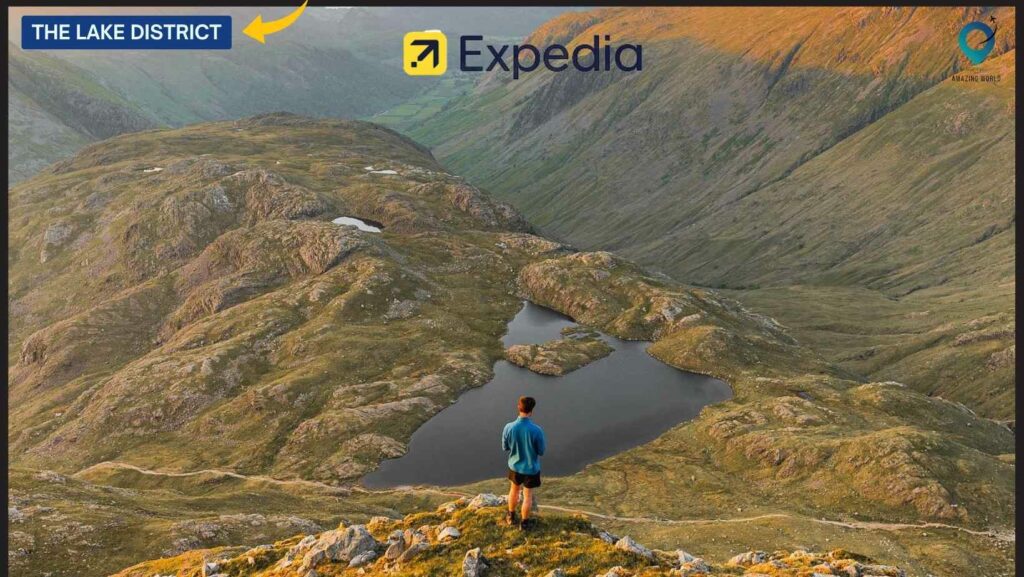
About the Lake District: 
Address: Lake District National Park, Cumbria, England
How to get there: 
- By Car: Visitors can drive to the Lake District via major road networks such as the M6 motorway, with designated parking areas available throughout the national park.
- By Bus: Public bus services operate from major cities and towns to destinations within the Lake District, offering convenient access for travelers relying on public transportation.
- By Train: Train services run to towns like Windermere, Kendal, and Penrith, providing a scenic journey through the countryside before reaching the heart of the Lake District.
Why to visit: 
Whether you’re hiking to the summit of iconic peaks like Scafell Pike and Helvellyn, cruising along shimmering lakes such as Windermere and Ullswater, or simply strolling through picturesque villages steeped in charm and history, the Lake District offers a diverse range of experiences to suit every traveler’s preference.
Daily Average Budget: £60 – £100 per person
Activities and Attractions:
- Embark on scenic hikes and walks, ranging from gentle lakeside strolls to challenging mountain ascents, with trails catering to all skill levels and interests.
- Explore historic landmarks and cultural attractions, including Wordsworth’s Dove Cottage, Beatrix Potter’s Hill Top Farm, and medieval castles like Wray Castle and Muncaster Castle.
- Engage in water-based activities such as boating, kayaking, and paddleboarding on the region’s pristine lakes, with equipment rental and guided tours available from local operators.
- Discover charming villages and market towns like Ambleside, Keswick, and Grasmere, where you can browse artisan shops, sample local cuisine, and soak up the quaint atmosphere.
- Immerse yourself in the literary heritage of the Lake District by visiting museums, galleries, and literary festivals celebrating the works of renowned poets and writers associated with the region.
Things to Avoid:
- Avoid overcrowded tourist hotspots during peak season, opting instead to explore lesser-known areas and off-the-beaten-path trails to enjoy a more peaceful experience.
- Be mindful of weather conditions and terrain when planning outdoor activities, ensuring you have appropriate clothing, footwear, and equipment to stay safe and comfortable.
- Respect wildlife and natural habitats by adhering to designated paths and conservation guidelines, refraining from littering or disturbing native flora and fauna.
- Avoid feeding wildlife or approaching animals in the wild, as this can disrupt their natural behavior and potentially pose risks to both humans and animals.
- Exercise caution when engaging in water-based activities, especially in open lakes or rivers, by following safety instructions, wearing life jackets, and being aware of potential hazards such as strong currents or submerged obstacles.
8. York: Known for its medieval city walls, York Minster, and Shambles Street with its timber-framed buildings.

About York: 
Address: York, North Yorkshire, England
How to get there: 
- By Car: Visitors can reach York via major road networks such as the A1(M) and the M62 motorway, with ample parking available in designated car parks throughout the city center.
- By Train: York boasts excellent rail connections, with frequent train services operating from major cities like London, Edinburgh, and Manchester, as well as regional towns across the UK.
- By Bus: National and regional bus services provide convenient access to York from neighboring cities and towns, with bus stops located near the city center for easy onward travel.
Why to visit: 
Whether you’re marveling at the grandeur of York Minster, meandering through the narrow lanes of the Shambles, or delving into the city’s fascinating past at renowned museums and heritage sites, York promises a journey of discovery and delight at every turn.
Daily Average Budget: £50 – £80 per person
Activities and Attractions:
- Visit York Minster, one of the largest Gothic cathedrals in Europe, renowned for its stunning architecture, intricate stained-glass windows, and panoramic views from the Central Tower.
- Explore the historic city walls, which encircle the city center and offer scenic walking routes with panoramic views of York’s skyline and landmarks.
- Wander along the Shambles, a medieval street lined with timber-framed buildings housing an array of independent shops, boutiques, and traditional tearooms.
- Discover York’s rich history at attractions such as the Jorvik Viking Centre, the York Castle Museum, and the York City Walls Experience, where interactive exhibits and immersive displays bring the past to life.
Things to Avoid:
- Avoid peak tourist hours when visiting popular attractions, opting instead to explore early in the morning or later in the day to avoid crowds and long queues.
- Be cautious when navigating the city’s narrow streets and pedestrianized areas, especially during busy periods, to avoid collisions with pedestrians and cyclists.
- Watch out for uneven surfaces and steep steps, particularly in historic areas where pavement may be uneven or cobblestone streets may pose tripping hazards.
- Be mindful of street performers and vendors in tourist areas, as some may engage in aggressive sales tactics or solicitations, especially during peak tourist season.
- Avoid feeding wildlife or engaging in disruptive behavior in public spaces, respecting the city’s natural environment and local regulations to ensure a pleasant experience for all visitors.
9. Cambridge and Oxford: Known for their prestigious universities, historic colleges, and punting on the River Cam and River Thames.
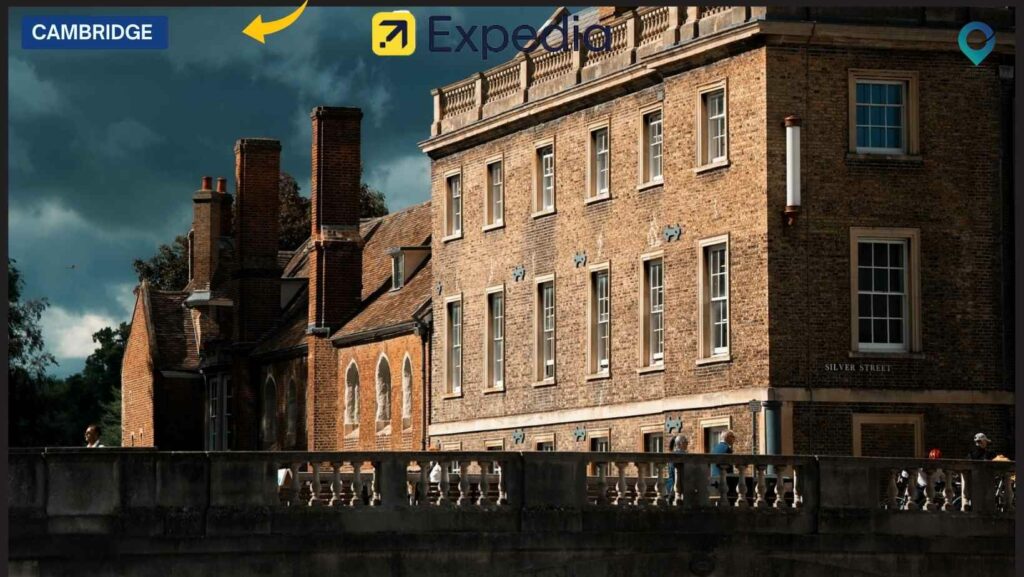
About Cambridge and Oxford: 
Beyond their academic acclaim, these historic cities captivate visitors with their picturesque landscapes, vibrant cultural scene, and timeless traditions, offering a glimpse into centuries of scholarly excellence and intellectual legacy.
Address: Cambridge: Cambridge, Cambridgeshire, England
How to get there: 
- By Car: Visitors can reach Cambridge and Oxford via major road networks, including the M11 motorway for Cambridge and the M40 motorway for Oxford, with ample parking available in designated areas around the city center.
- By Train: Direct train services operate from London to both Cambridge and Oxford, with frequent connections throughout the day and journey times of approximately one to two hours, depending on the route.
- By Bus: National and regional bus services provide convenient access to Cambridge and Oxford from neighboring cities and towns, with bus stops located near the city center for easy onward travel.
Why to visit: 
Whether you’re exploring the hallowed halls of ancient colleges, punting along tranquil rivers adorned with weeping willows, or immersing yourself in the vibrant atmosphere of bustling market squares, Cambridge and Oxford promise an enriching experience steeped in tradition, innovation, and timeless charm.
Daily Average Budget: £60 – £100 per person (including accommodation, meals, and activities)
Activities and Attractions:
- Visit renowned colleges such as Cambridge’s Trinity College and Oxford’s Christ Church College, where you can admire architectural masterpieces, stroll through manicured courtyards, and soak up the scholarly ambiance.
- Experience the timeless tradition of punting along the River Cam in Cambridge or the River Thames in Oxford, enjoying scenic views of historic landmarks and tranquil waterways.
- Explore museums and galleries showcasing world-class collections, from the Fitzwilliam Museum in Cambridge to the Ashmolean Museum in Oxford, where art, artifacts, and antiquities offer insights into diverse cultures and civilizations.
- Wander through picturesque gardens and green spaces, including Cambridge’s Botanic Garden and Oxford’s University Parks, where lush landscapes and colorful blooms provide a serene escape from the bustling city streets.
- Attend cultural events, lectures, and performances at Cambridge’s Cambridge Arts Theatre and Oxford’s Sheldonian Theatre, where a rich calendar of events celebrates the arts, literature, and academic achievements.
Things to Avoid:
- Avoid visiting during peak tourist seasons, such as graduation ceremonies and exam periods, when crowds are at their peak and accommodations may be scarce.
- Be cautious when punting on the rivers, especially during inclement weather or busy weekends, to avoid collisions with other boats and ensure a safe and enjoyable experience.
- Watch out for pickpockets and petty theft in crowded areas and tourist hotspots, keeping valuables secure and maintaining awareness of your surroundings at all times.
- Be mindful of academic and cultural customs, respecting the privacy and traditions of college communities and refraining from disruptive behavior or unauthorized access to restricted areas.
- Avoid feeding wildlife or littering in parks and public spaces, preserving the natural beauty and ecological balance of Cambridge and Oxford’s scenic landscapes for future generations to enjoy.
10. Canterbury: Known for Canterbury Cathedral, a UNESCO World Heritage Site, and its association with Geoffrey Chaucer’s Canterbury Tales.
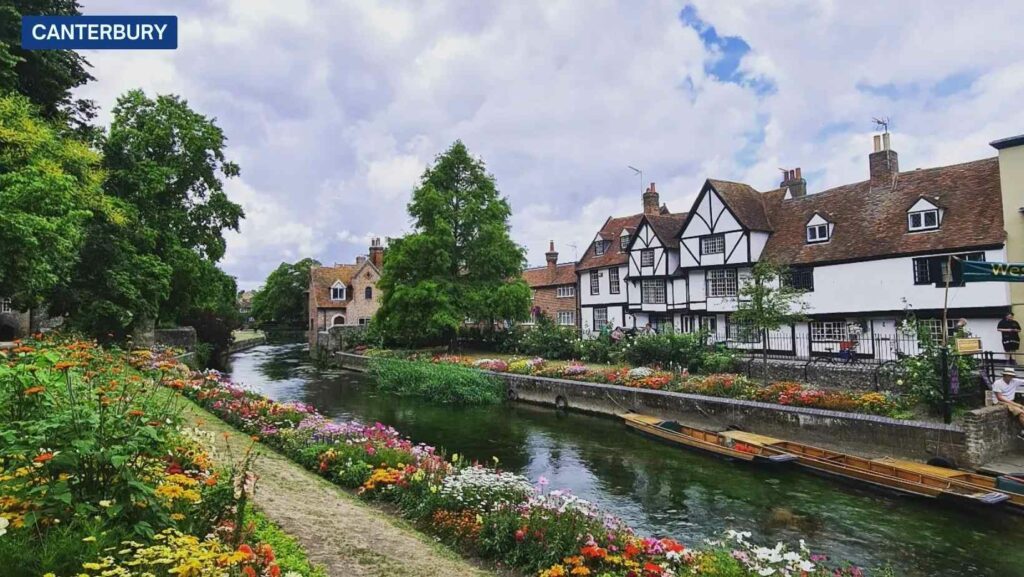
About Canterbury: 
Beyond its iconic landmarks, Canterbury enchants visitors with its quaint cobbled streets, timber-framed buildings, and picturesque riverside setting, evoking a sense of timeless elegance and tranquility.
Address: Canterbury, Kent, England
How to get there: 
- By Car: Visitors can reach Canterbury via major road networks, including the A2 and M2 motorways, with ample parking available in designated areas around the city center.
- By Train: Direct train services operate from London to Canterbury, with frequent connections throughout the day and journey times of approximately one to two hours, depending on the route.
- By Bus: National and regional bus services provide convenient access to Canterbury from neighboring cities and towns, with bus stops located near the city center for easy onward travel.
Why to visit: 
Whether you’re marveling at the soaring spires of Canterbury Cathedral, retracing the footsteps of pilgrims along the ancient pilgrimage route of the Canterbury Tales, or meandering through bustling market squares and quaint alleyways, Canterbury promises an enchanting experience steeped in tradition, reverence, and timeless beauty.
Daily Average Budget: £40 – £70 per person (including accommodation, meals, and activities)
Activities and Attractions:
- Explore Canterbury Cathedral, a masterpiece of medieval architecture and a symbol of spiritual pilgrimage, where you can marvel at its Gothic splendor, intricate stained-glass windows, and sacred relics.
- Follow in the footsteps of Geoffrey Chaucer’s pilgrims along the historic Canterbury Tales route, immersing yourself in the colorful characters and timeless tales that have captivated readers for centuries.
- Wander through the charming streets of Canterbury’s old town, where you’ll discover timber-framed buildings, historic landmarks, and quaint shops selling local crafts and souvenirs.
- Visit St. Augustine’s Abbey and St. Martin’s Church, historic sites that offer insights into Canterbury’s early Christian heritage and architectural legacy.
Things to Avoid:
- Avoid visiting Canterbury Cathedral during religious services or events, as access to certain areas may be restricted, and visitors are expected to maintain a respectful demeanor.
- Be cautious when navigating narrow streets and pedestrian areas, especially during peak tourist seasons, when crowds can make it challenging to move around freely.
- Watch out for tourist traps and overpriced attractions, taking care to research prices and read reviews before committing to tours or activities.
- Respect local customs and traditions, especially when visiting religious sites or participating in cultural events, and dress modestly and appropriately out of courtesy.
- Be mindful of pickpockets and petty theft in crowded areas and tourist hotspots, keeping valuables secure and maintaining awareness of your surroundings at all times.
11. Loch Ness and Inverness: Known for Loch Ness and the legend of the Loch Ness Monster, as well as Culloden Battlefield.

About Loch Ness and Inverness: 
Address: Inverness, Highland, Scotland
How to get there: 
Why to visit: 
Daily Average Budget: £50 – £80 per person
Activities and Attractions:
- Boat cruise on Loch Ness
- Explore Urquhart Castle
- Visit Culloden Battlefield Visitor Centre
- Wander around Inverness Old Town
- Drive along the North Coast 500 route
Things to Avoid:
- Swimming in Loch Ness
- Hiking in rough terrain without proper gear
- Watch out for midges in summer
- Respect wildlife and nature
- Be prepared for changing weather
12. Giant’s Causeway: Known for its unique geological formations and stunning coastal scenery in Northern Ireland.

About Giant’s Causeway: 
Address: 44 Causeway Road, Bushmills, Antrim, Northern Ireland
How to get there: 
Why to visit: 
Daily Average Budget: £10 – £20 per person (for admission and transportation)
Activities and Attractions:
- Walk along the Giant’s Causeway Coastal Path
- Visit the Giant’s Causeway Visitor Centre
- Explore the nearby ruins of Dunluce Castle
- Take a scenic drive along the Causeway Coastal Route
- Enjoy stunning sunset views over the Atlantic Ocean
Things to Avoid:
- Climbing on the basalt columns (for safety reasons)
- Leaving litter or damaging the natural environment
- Swimming in the rough waters along the coastline
- Ignoring safety signs and guidelines
- Visiting during peak tourist hours for a quieter experience
13. Liverpool: Known for its musical heritage, including The Beatles, and its historic waterfront area.

About Liverpool: 
Address: Liverpool, Merseyside, England
How to get there: 
Why to visit: 
Daily Average Budget: £20 – £40 per person (for attractions, dining, and transportation)
Activities and Attractions:
- Visit The Beatles Story Museum at Albert Dock
- Explore the historic waterfront area, including the Royal Albert Dock
- Take a guided Beatles-themed tour of the city
- Discover Liverpool’s maritime history at the Merseyside Maritime Museum
- Enjoy live music at iconic venues like The Cavern Club
Things to Avoid:
- Missing out on The Beatles-related attractions
- Underestimating the walking distance between landmarks
- Overlooking lesser-known cultural gems in the city
- Ignoring safety precautions while exploring the waterfront
- Visiting during peak tourist seasons for a more relaxed experience
14. Manchester: Known for its industrial heritage, football clubs like Manchester United and Manchester City, and vibrant cultural scene.
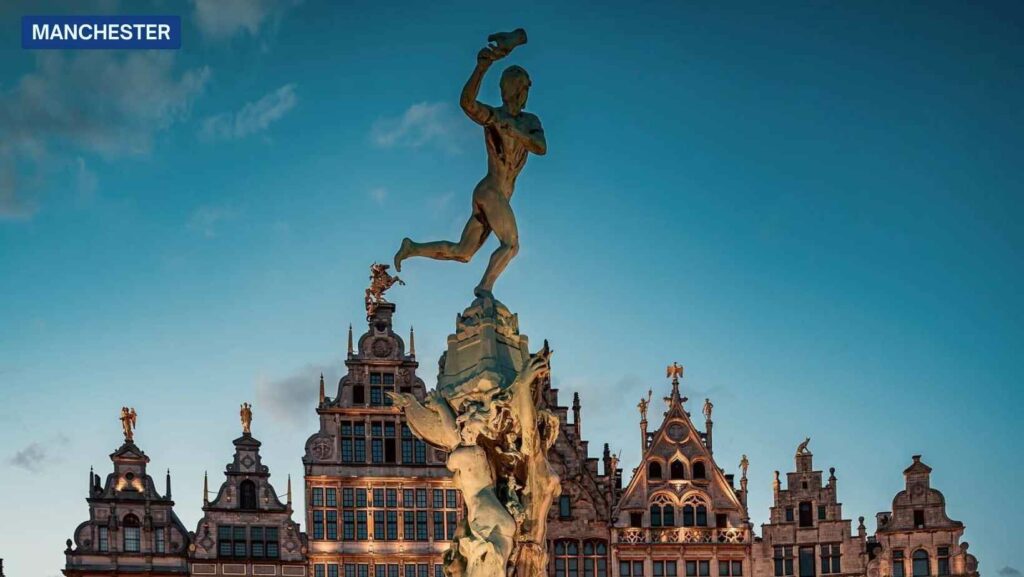
About Manchester: 
Address: Manchester, Greater Manchester, England
How to get there: 
Why to visit: 
Daily Average Budget: £20 – £40 per person (for attractions, dining, and transportation)
Activities and Attractions:
- Tour the stadiums of Manchester United and Manchester City
- Explore the vibrant Northern Quarter for its indie shops and street art
- Visit the Manchester Museum and the Science and Industry Museum
- Experience live music at iconic venues like the O2 Ritz and Band on the Wall
- Discover Manchester’s industrial past at sites like the People’s History Museum
Things to Avoid:
- Underestimating the walking distance between attractions
- Missing out on Manchester’s diverse culinary scene
- Not pre-booking tickets for popular attractions and events
- Ignoring safety precautions while exploring the city
- Visiting during peak football match days without planning ahead
15. Cardiff: Known for Cardiff Castle, Cardiff Bay, and its role as the capital of Wales.

About Cardiff: 
Address: Cardiff, Wales, United Kingdom
How to get there: 
Why to visit: 
Daily Average Budget: £20 – £40 per person (for attractions, dining, and transportation)
Activities and Attractions:
- Explore Cardiff Castle and its historic grounds
- Take a boat tour or stroll along Cardiff Bay
- Visit the National Museum Cardiff and the Wales Millennium Centre
- Enjoy shopping and dining in the city center
- Experience Welsh culture at St Fagans National Museum of History
Things to Avoid:
- Underestimating the walking distance between attractions
- Missing out on local delicacies like Welsh cakes and cawl
- Not checking the opening hours of attractions and museums in advance
- Ignoring safety precautions while exploring Cardiff Bay
- Visiting during major events or festivals without booking accommodation in advance
16. The Channel Islands: Known for their sandy beaches, historic castles, and unique blend of British and French culture.

About the Channel Islands: 
Address: Channel Islands, United Kingdom
How to get there: 
Why to visit: 
Daily Average Budget: £30 – £50 per person (for activities, dining, and transportation)
Activities and Attractions:
- Relax on the sandy beaches and enjoy water sports like swimming, surfing, and kayaking
- Visit historic sites such as Mont Orgueil Castle on Jersey and Castle Cornet on Guernsey
- Explore the charming villages of St. Peter Port, St. Helier, and St. Anne
- Take scenic walks along the coastal paths and countryside
- Experience the islands’ culinary delights, including fresh seafood and traditional dishes influenced by British and French cuisine
Things to Avoid:
- Disregarding tide times when exploring coastal areas
- Overpacking for your trip, as the islands have a mild climate
- Missing out on local events and festivals showcasing the islands’ culture and heritage
- Not carrying local currency (British pound sterling) for transactions
- Ignoring safety precautions while engaging in water sports or outdoor activities
17. Glasgow and Loch Lomond: Known for Glasgow’s art galleries and museums, and Loch Lomond for its natural beauty and outdoor activities.
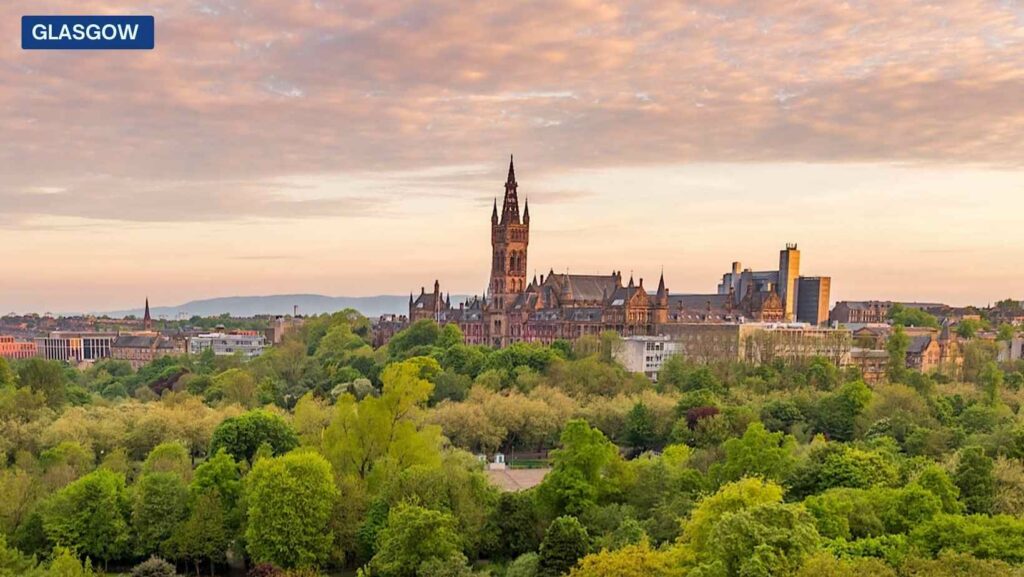
About Glasgow and Loch Lomond: 
Address: Glasgow, Scotland, United Kingdom
How to get there:
- Glasgow:
Glasgow is easily accessible by train, bus, and car from major cities across the UK. Glasgow Airport offers domestic and international flights for air travelers.
- Loch Lomond:
Loch Lomond is approximately a 30-40 minute drive from Glasgow city center. Visitors can also take buses or join guided tours to explore the area.
Why to visit: 
Daily Average Budget: £40 – £60 per person (for activities, dining, and transportation)
Activities and Attractions:
Glasgow:
- Explore the Kelvingrove Art Gallery and Museum, home to an extensive collection of art and artifacts.
- Wander through the vibrant West End, known for its eclectic mix of shops, cafes, and street art.
- Visit Glasgow Cathedral and the nearby Necropolis for a glimpse into the city’s medieval history.
- Enjoy live music and performances at iconic venues like the Glasgow Royal Concert Hall and the Barrowland Ballroom.
Loch Lomond:
- Take a cruise on Loch Lomond to admire its scenic beauty and surrounding mountains.
- Hike or cycle along the West Highland Way, which passes through the Loch Lomond and Trossachs National Park.
- Enjoy water sports such as kayaking, paddleboarding, and fishing on the loch.
- Visit picturesque villages like Luss and Balmaha, offering charming waterfront views and traditional Scottish hospitality.
Things to Avoid:
- Underestimating travel times between Glasgow and Loch Lomond, especially during peak tourist seasons.
- Overpacking for outdoor activities; pack essentials like sturdy footwear, weather-appropriate clothing, and sunscreen.
- Missing out on local delicacies and traditional Scottish cuisine while dining in Glasgow and the Loch Lomond area.
- Ignoring safety guidelines while engaging in water-based activities on Loch Lomond, including checking weather conditions and wearing appropriate flotation devices.
18. Snowdonia: Known for Mount Snowdon, the highest peak in Wales, and its rugged landscapes perfect for hiking and climbing.
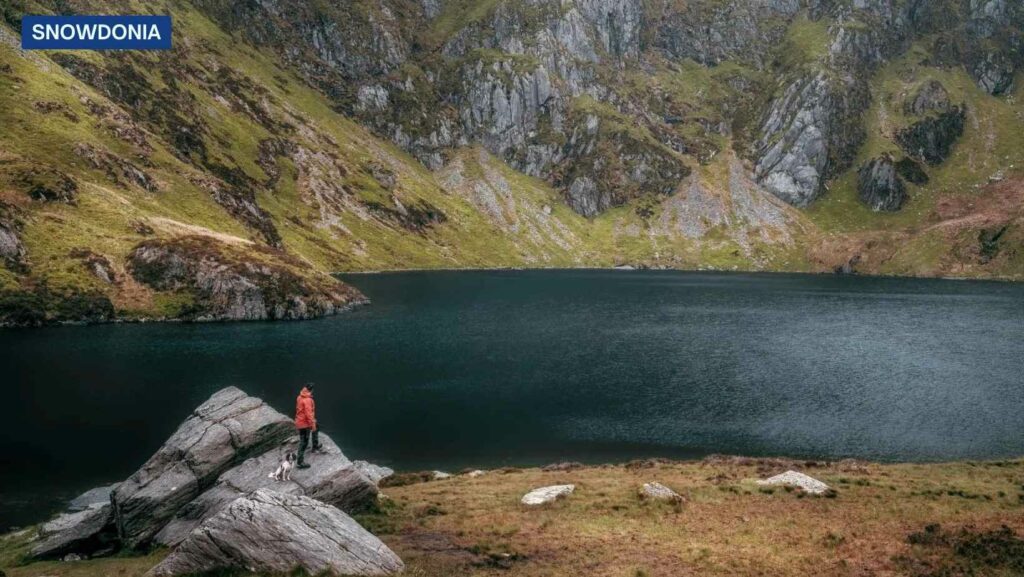
About Snowdonia: 
Address: Snowdonia National Park, Wales, United Kingdom
How to get there:
- By Car:
Snowdonia is accessible by car via major highways from cities like Manchester, Liverpool, and Cardiff. The park has several parking areas near popular trailheads and attractions.
- By Train:
Visitors can take trains to nearby towns like Bangor, Betws-y-Coed, and Llandudno Junction, and then use local bus services or taxis to reach Snowdonia.
- By Bus:
National Express and local bus services offer routes to towns within Snowdonia, providing access to various parts of the national park.
Why to visit: 
Daily Average Budget: £30 – £50 per person (for activities, dining, and transportation)
Activities and Attractions:
- Hiking: Scale Mount Snowdon via various trails, including the popular Llanberis Path and the challenging Crib Goch ridge. Explore other scenic routes like the Glyderau and Carneddau mountain ranges.
- Climbing: Test your climbing skills on Snowdonia’s craggy peaks and cliffs, with options ranging from beginner-friendly routes to advanced challenges for experienced climbers.
- Scenic Railway: Take a ride on the Snowdon Mountain Railway for a leisurely ascent to the summit of Mount Snowdon, offering panoramic views of the surrounding landscapes.
- Outdoor Adventures: Enjoy activities like mountain biking, zip-lining, and white-water rafting at adventure centers like Zip World and Surf Snowdonia.
- Exploring Villages: Visit charming villages like Betws-y-Coed, Beddgelert, and Llanberis, known for their cozy cafes, traditional pubs, and quaint shops selling local crafts.
Things to Avoid:
- Underestimating the weather conditions: Snowdonia’s climate can be unpredictable, so always check the forecast and come prepared with appropriate clothing and gear.
- Overcrowded trails: Consider visiting less popular trails or hiking early in the morning to avoid crowds, especially during peak tourist seasons.
- Ignoring safety guidelines: Stay on marked trails, carry essential supplies like water and snacks, and inform someone of your hiking plans to ensure your safety in the wilderness.
- Leaving litter: Help preserve Snowdonia’s pristine environment by disposing of waste responsibly and respecting the natural surroundings.
19. Belfast: Known for its Titanic Quarter, political murals, and vibrant nightlife scene.
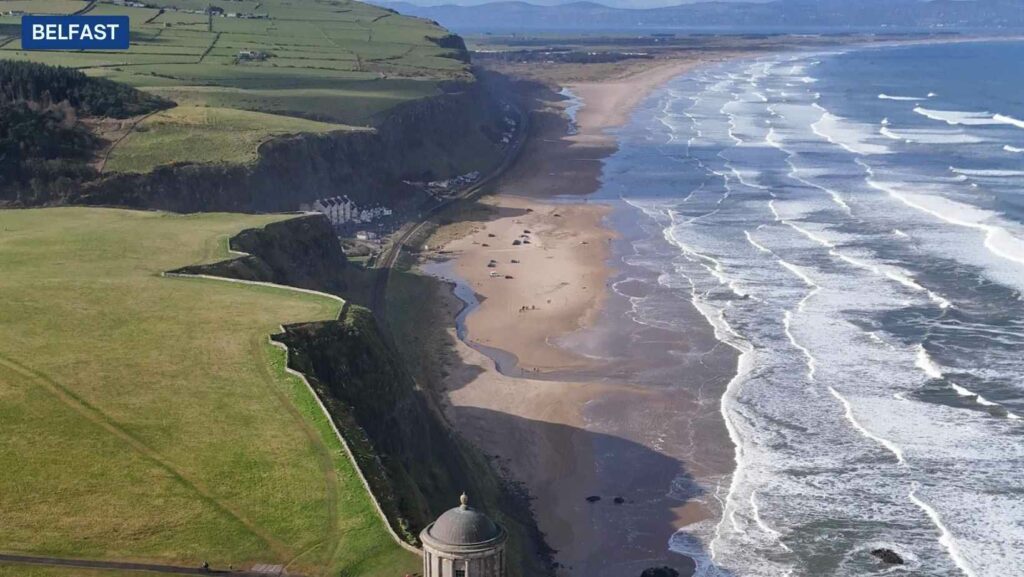
About Belfast: 
Address: Belfast, Northern Ireland, United Kingdom
How to get there:
- By Air:
Belfast is served by two airports: Belfast International Airport and George Best Belfast City Airport, offering domestic and international flights from various destinations.
- By Ferry:
Visitors can also reach Belfast via ferry services from ports in England and Scotland, with regular sailings connecting Belfast to Liverpool, Cairnryan, and Stranraer.
- By Train/Bus:
Belfast has well-connected train and bus stations, providing convenient transport links to other cities and towns across Northern Ireland and the Republic of Ireland.
Why to visit: 
Daily Average Budget: £40 – £60 per person (for accommodation, meals, transportation, and entertainment)
Activities and Attractions:
- Titanic Quarter: Discover the fascinating story of the RMS Titanic at the Titanic Belfast museum, explore the historic shipyard where the Titanic was built, and take a boat tour of Belfast Harbor to learn about the city’s maritime heritage.
- Political Murals: Embark on a guided tour of Belfast’s neighborhoods to view the famous political murals, which depict the city’s troubled past and its journey toward peace and reconciliation.
- Cultural Landmarks: Visit landmarks like Belfast City Hall, St. Anne’s Cathedral, and the Ulster Museum to delve into Belfast’s cultural heritage and architectural splendour.
- Nightlife: Experience Belfast’s lively nightlife scene by sampling craft beers at traditional pubs, enjoying live music performances at local venues, or dancing the night away in trendy clubs and bars.
- Culinary Delights: Indulge in Northern Irish cuisine by dining at cozy gastropubs, seafood restaurants, and eateries serving traditional dishes like Ulster fry, Irish stew, and soda bread.
Things to Avoid:
- Disrespecting cultural sensitivities: Be mindful of Belfast’s complex history and avoid making insensitive remarks about political or religious matters.
- Wandering into unfamiliar areas at night: While Belfast is generally safe for tourists, it’s advisable to stick to well-lit and populated areas, especially after dark.
- Engaging in political discussions: Unless invited by locals, refrain from discussing sensitive political issues, as opinions can vary widely and lead to disagreements.
- Falling for tourist traps: Research restaurants, tours, and attractions beforehand to avoid overpriced or low-quality experiences.
Conclusion
Belfast offers a captivating blend of history, culture, and modernity that appeals to travelers from all walks of life. From its iconic landmarks and cultural attractions to its vibrant nightlife and culinary scene, the city has something to offer every visitor.
With its warm hospitality, diverse neighborhoods, and rich heritage, Belfast invites you to explore its streets, uncover its stories, and experience the unique charm of Northern Ireland’s capital city. Whether you’re fascinated by history, intrigued by politics, or simply seeking adventure, Belfast promises an unforgettable journey filled with discovery and delight.
How much did you like Our detailed Top 19 Places to Visit in the UK: From Historic Sites to Natural Wonders (2024 Updated) Review Also, please share these Blogs with your friends on social media.
Related Article –
- Hotels.com Review
- Expedia Review
- Booking Budget-Friendly Trips with Expedia
- 10 Expert Tips for Finding Cheap Flights on Expedia
- 15 Best Pet-Friendly Hotels in the UK

Meet David Hoper, a passionate travel Blog writer with 7+ years of experience in travel content. Through his exemplary storytelling and engaging narratives, he shares his experiences and brings destinations to life. With a keen eye for detail and a love for exploration, he has cultivated a diverse portfolio of travel blogs that inspire and inform readers worldwide.






